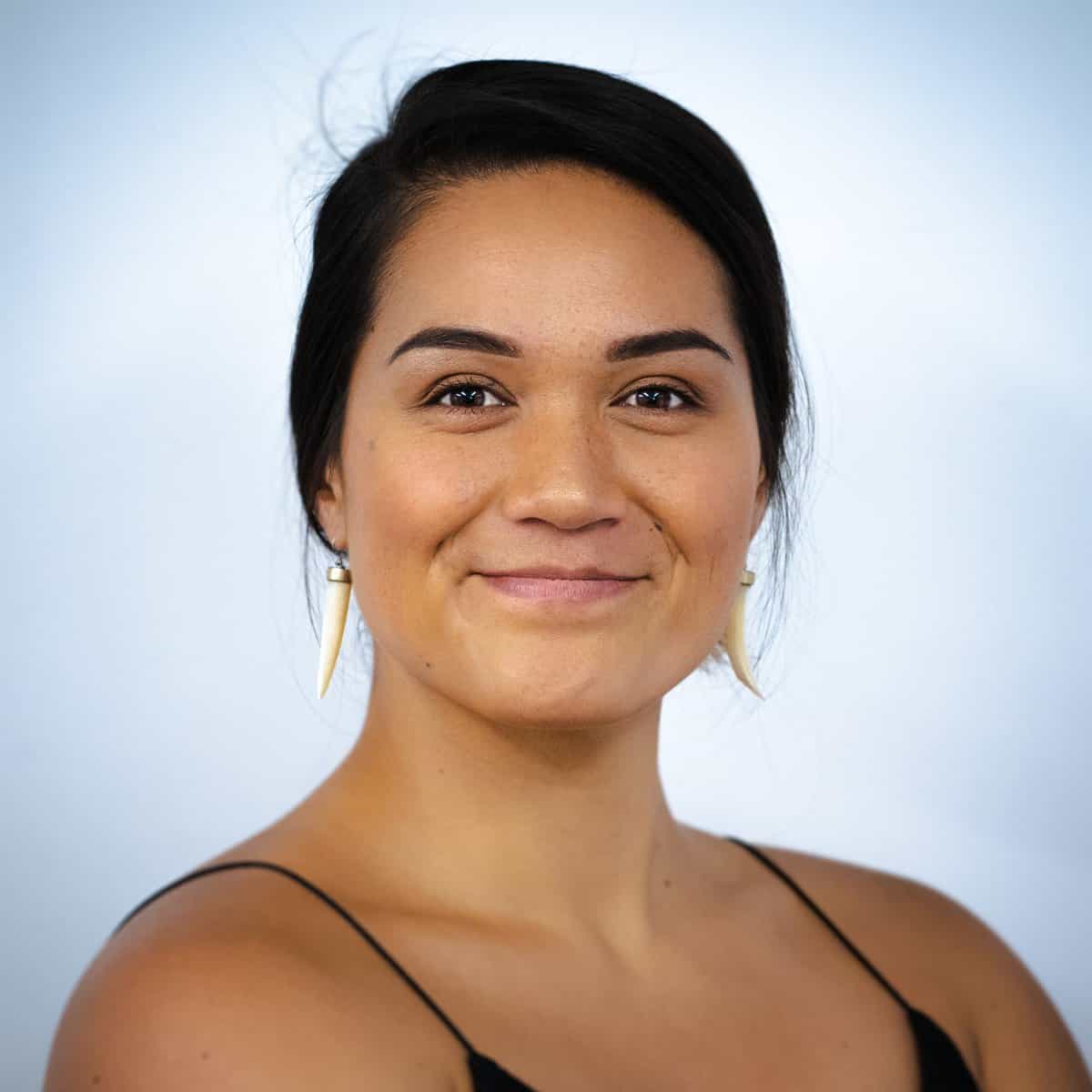
Waimirirangi Ormsby grew up up-north, in houses that seemed to always sit near waterways.
She remembers one Christmas in Whangārei, when she was around eight-years-old, she decided she would sneak out to gather tuna (eels) for her whānau from the nearby creek. She headed to a spot where she would sometimes catch glimpses of those silky, sinuous forms, and stayed out there for two or three hours.
She didn’t yet know about hīnaki (eel pots), and wasn’t rewarded with any bites on her homemade fishing line. But her mission stands out to her as an expression of her innate connection to te taiao (the ecosystems of Aotearoa), a connection that has since grown and strengthened.
Speaking about what drew her to the Kaiārahi role, and the value that she hopes she can bring to BioHeritage, Waimirirangi raised the achievements of kaumātua like Matua Tohe Ashby (Ngāti Hine). Matua Tohe weaves together his expertise in ngahere ora (forest health) with Western science practices, to find the “interface” that can produce resources for everyone to help restore and protect te taiao. For Waimirirangi, fostering accessibility is central to the Kaiārahi role.
“We’re taking the outcomes of the rangahau (research) that grow from collaborative relationships between these amazing researchers and the hapori (communities) they’re working with, and making sure that that mātauranga is implemented even more so into our hapū, into our iwi, into our hapori,” says Waimirirangi.
“In this way, we can ensure that the benefits of the rangahau are ongoing for years to come.”
“It’s being able to see this value in all of the projects. It’s about creating tangible resources that can be touched, or read, or listened to, so that our whānau, who are part of the environments that we are researching, are involved in the rangahau.”
Upholding the integrity of te reo Māori, mātauranga, and Te Ao Māori (by those who utilise them) is a central value for Waimirirangi. She sees the active guardianship of these taonga (treasured resources) as being essential.
“I’d like to help ensure that we’re using the correct kupu, that we’re working on pronunciation, that the mātauranga we’re using has been said by those with expertise,” says Waimirirangi. “I want the Challenge to be as excellent in those spaces as possible.”
Reflecting on her own childhood, Waimirirangi envisions a taiao-infused future for her thirteen-month-old daughter.
“Every single holiday I would come to Waikato to stay with my grandparents. If you’re driving from Auckland-way into Waikato, the first sign that told me I was close was the power station in Huntly, with the big red chimney – and that used to excite me. Now we see the awa (the Waikato River), and that’s what excites me at this age.”
Waimirirangi and her husband have endeavoured to cultivate their daughter’s innate connection with te taiao and were rewarded by one of her first words: “awa”.
Waimirirangi isn’t afraid to tackle big questions about capitalism, power, and exploitation, and the relationship of these structures with environmental connectedness and belonging.
In response to a question about fostering environmental connectedness in those who are yet to make those discoveries, Waimirirangi thought for a moment. “Knowing our place in the bigger pictures of things – not just in our lifetimes, but in the lives of those before us, and those who are coming in the future – will help us understand why having a connection to te taiao is so important.”
“Māori consider ourselves as tēina, younger. In terms of our wider ecosystems we are younger than [the lifeforms] that have been here long before us. It’s our responsibility to ensure the well-being of te taiao because te taiao is a reflection of us, and is a reflection of the state that our people are in.”
Waimirirangi looks to her dad, “a mahi man”, as an example of a trailblazer whose influence has guided her own accomplishments. “My dad did a lot of work in alternative education programmes, with kids who’d been kicked out of schools. He was always outside, always creating things.”
At his tangi these accomplishments were brought into focus.
“Hearing about all the stuff he used to do, helping rangatahi, being out in te taiao I thought I’m just like my bloody dad!” During her childhood mission to catch tuna, Waimirirangi remembers singing to herself, made-up songs of made-up words, and returning to this expression again and again, whenever she was alone in nature, developing a personal connection with te taiao that was modelled to her by her father, and that she fosters in her daughter today.
Waimirirangi will be working closely with BioHeritage’s Pou Pūtaiao Erina Watene-Rawiri (Waikato, Ngāti Māhanga), and she’s looking forward to building on her connection with Co-Directors Daniel Patrick and Shaun Ogilvie.
Kerry Donovan Brown
